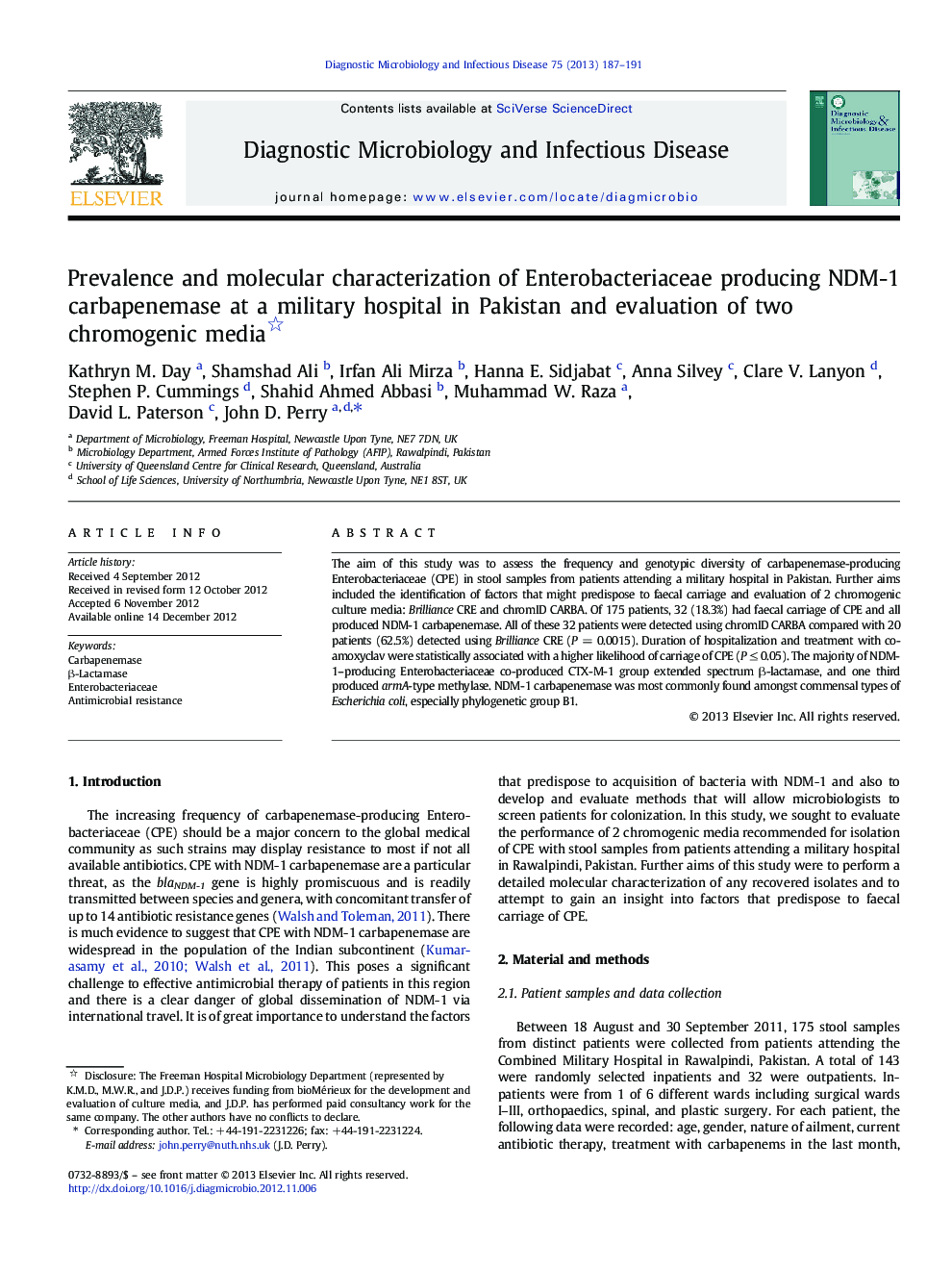| Article ID | Journal | Published Year | Pages | File Type |
|---|---|---|---|---|
| 6116102 | Diagnostic Microbiology and Infectious Disease | 2013 | 5 Pages |
Abstract
The aim of this study was to assess the frequency and genotypic diversity of carbapenemase-producing Enterobacteriaceae (CPE) in stool samples from patients attending a military hospital in Pakistan. Further aims included the identification of factors that might predispose to faecal carriage and evaluation of 2 chromogenic culture media: Brilliance CRE and chromID CARBA. Of 175 patients, 32 (18.3%) had faecal carriage of CPE and all produced NDM-1 carbapenemase. All of these 32 patients were detected using chromID CARBA compared with 20 patients (62.5%) detected using Brilliance CRE (P = 0.0015). Duration of hospitalization and treatment with co-amoxyclav were statistically associated with a higher likelihood of carriage of CPE (P ⤠0.05). The majority of NDM-1-producing Enterobacteriaceae co-produced CTX-M-1 group extended spectrum β-lactamase, and one third produced armA-type methylase. NDM-1 carbapenemase was most commonly found amongst commensal types of Escherichia coli, especially phylogenetic group B1.
Related Topics
Life Sciences
Immunology and Microbiology
Applied Microbiology and Biotechnology
Authors
Kathryn M. Day, Shamshad Ali, Irfan Ali Mirza, Hanna E. Sidjabat, Anna Silvey, Clare V. Lanyon, Stephen P. Cummings, Shahid Ahmed Abbasi, Muhammad W. Raza, David L. Paterson, John D. Perry,
